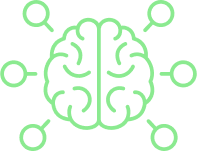Our Framework



/ Infra / – from Latin meaning below or under
/ tech / – from late 19th century meaning technology and applied sciences
Users across enterprise and government have forgotten just how much lies below the technology they depend on every day.
Like the foundations of a building, you may not see them, but if they are not designed, built and installed correctly, disaster will happen, it is only a matter of time.
We divide Infratech into three broad categories of technology:
#1 Category


Physical
#1 Networks
LAN WAN MAN WLAN#2 Compute
DC/Edge/End-user#3 Storage
Tape/Disc/NAS/SAN#4 Security
Access Control, Firewalls, IDS/IPS#2 Category


Logical
#1 Networks
SDN/SD-WAN/NFV#2 Compute
Virtual Datacentre, /Cloud#3 Storage
Block/Object/Distributed#4 Security
SASE/CASB/IdAM#3 Category


Operational
#1 Network Operations Center
NOC#2 Service Desk
#3 Security Operations Centre
SOC / SIEM#4 Backup, archival & disaster recovery
BC/DRInfratech 5 Cubed

5cubed changes the way infrastructure eXperience is viewed by providers, customers and architects.
Every lens is different but the outcomes remain constant when the approach is used.

Technologies
grouped by operational application

Artefacts
documentation delivering consistency

States
prioritising business outcomes
Our cubes each have only five sides, because one is always firmly grounded on physical reality.
Despite what you have heard about the “cloud” and “virtual reality” – somewhere there is a real physical technology making is possible.
The three cubes that make up our 5 Cubed are:

5Cubed in action follows a set pattern of activity… in effect our “5 Steps” to project delivery;
This sequence of activity is essential to ensure business value.
Most IT projects fall down not because of technical reasons, but because organisations failed to clearly define the who-what-why-where and when drivers, instead skipped directly to how and brought some shiny tech.
The three cubes that make up our 5 Cubed are:
Buildings need foundations, so do digital applications.
Infratech 5 Pillars

Digital Transport
The ability to connect and communicate between people, systems and machines

Digital Transport
The ability to connect and communicate between people, systems and machines
Network analysis and design (IT, OT, wireless, LAN/CAN/MAN/WAN)
Network refresh (technology and topology)
Network security (secure-by-design)
Sensor / IoT / M2M communication
Physical (network) transport standards, design & planning (ductwork, fiber/copper, wireless design, frequency optimization)
Procurement & supplier selection – hardware / managed network services / wires-only
VPN / SDN / SD-WAN / MPLS (overlay) network design
Gateway (network perimeter) design – Proxies / WAF / Anti-DDoS

Digital Machinery
The ability to connect and communicate between people, systems and machines
Compute strategy, policy, standards & system design (physical, on-premises, colocation, edge & cloud)
Storage strategy, policy, standards & system design (Tier 0/1/2/3, hot/cold, archive/retention)
Sensor / control / IoT / M2M system strategy, policy, standards & system design
Physical automation control systems (drones / robotics)
Datacentre strategy, policy, standards & infrastructure design (racks, power, cooling, etc.)
Cloud migration (in or out)
Multi-cloud / hybrid-cloud strategy, policy, standards & system design
Edge computing / distributed compute strategy, policy, standards & system design
End-user computing strategy, policy, standards & system design (tablets, mobiles, PCs, wearables)

Digital Control
The ability to connect and communicate between people, systems and machines
Network Operations Centre strategy, design & tooling specifications
IT Service Management system design (ITIL tooling and systems)
Automation / Orchestration system design
Remote monitoring and management strategy, policy, standards & system design
BC/DR strategy, policy, standards & tooling specifications (for technology systems)
Logging and event management strategy, policy, standards & system design
Directory Services strategy, policy, standards and system design – including name resolution (DNS), certificate management (CA), mail/messaging (SMTP)
Mobile Data/Device Management strategy, policy, standards and system design – phones / tablets / laptops
BYOD strategy, policy, standards and system design – mobile, PC and other
Systems Operations Centre strategy, design & tooling specifications (datacenter, multi-cloud management, financial IT resource control.

Digital Security
The ability to connect and communicate between people, systems and machines
SOC/SIEM strategy, policy, standards & system design
Security Operating Procedures (SyOPs) for technical infrastructure (Zero-Trust)
Identity & Access Management (IAM / IdAM) strategy, policy, standards & system design
Role / Attribute Based Access controls and systems (entitlement)
Identity Governance Administration (IGA)
User provisioning & self-service (JML) systems
Privileged Access Management (PAM) controls and systems
Single-Sign-On strategy, policy, standards & system design
Anti-Virus / Anti-Malware system design
SASE / SSE / Cloud Security (CASB) / Virtual Perimeter strategy, policy, standards & system design
Multi-Factor Authentication strategy, policy, standards & system design
Attack-surface / blast radius minimization (micro-segmentation)
CCTV & surveillance strategy, policy, standards & system design
Biometrics strategy, policy, standards & system design
Physical controls (e.g. building access controls)

Digital Intelligence
The ability to connect and communicate between people, systems and machines
Enterprise Architecture principles to guide and direct IT efforts
Documentation standards, practices and templates
The “Enterprise Continuum” building blocks that are required for a digital organisation
Training & enablement for IT teams, procurement and service management
Service Integration and Management (SIAM) strategy enablement
Technology roadmaps and future-planning
Technology budgeting and financial modellingTechnology budgeting and financial modellingTechnology budgeting and financial modelling
Interfacing between TOGAF “Technology” domain and the other three domains of EA
Much like technology must be useable to be valuable, the same holds true for documentation...
Infratech 5 Artefacts

Strategy documents

the why an infrastructure is needed

Policy documents

the what of technology and systems is included

Standards (aka reference design) documents

the what of technology and systems is included

High Level Design documents

the intent of each system

Low Level Design documents

the implementation of each system
Our methodology establishes a clear “why” for each artefact, and a taxonomy that defines how each artefact informs and influences the artefacts that follow. Most importantly, documentation effort is minimized to focus on meaningful outcomes.
The enterprise checklist for IT infrastructure lifecycle.
Infratech 5 States
5Cubed in action follows a set pattern of activity… in effect our “5 Steps” to project delivery:
This sequence of activity is essential to ensuring business value. Most IT projects fall down not because of technical reasons, but because organisations have failed to clearly define the who – what – why – where and when drivers, and instead skipped directly to how and bought some shiny tech.






Infratech 5 States
#1 Procure


This state is about much more than a purchase order. It is a detailed activity to align strategy, policy and standards that needs to take place. Requests for Information, Proposal & Delivery activities can be run in a structured fashion. Supplier selection and on-boarding includes security assessments. Final purchasing can then take place.
#2 Deploy


Before deployment can commence we guide impact assessment, inform business change management, consider and produce reference designs, high level designs & low-level designs. Design activity goes through assurance and governance reviews. Testing is conducted, and operational readiness is assessed.
#3 Operate


Once a service is live, it is time for the organisation to onboard into service management, monitoring and analytic tools. Baselines are created, and norms established for performance and security. Processes for evergreen, planned maintenance, disaster recovery and business continuity are proved out.
#4 Migrate


A service which is on its way out needs to first have all data, workloads and users migrated to a new solution. This state involves another pass through impact assessment and business change management. Historical access and archiving needs to be considered from legal, compliance and continuity angles. Any reduction in capability needs to be managed through to evolved Target Operating Models.
#5 Divest


An end-of-life service (or technology) needs to be securely removed from the business. This includes data sanitization and documentation updates. Confirmation that all data and workloads have been successfully migrated happens. Environmental concerns are also addressed maximizing recycling and minimizing environmental impacts.
Infratech 5 States
The enterprise checklist for IT infrastructure lifecycle.

#1 Procure
| This state is about much more than a purchase order. It is a detailed activity to align strategy, policy and standards that needs to take place.
Requests for Information, Proposal & Delivery activities can be run in a structured fashion. Supplier selection and on-boarding includes security assessments. Final purchasing can then take place. |

#2 Deploy
| Before deployment can commence we guide impact assessment, inform business change management, consider and produce reference designs, high level designs & low-level designs.
Design activity goes through assurance and governance reviews. Testing is conducted, and operational readiness is assessed. |


